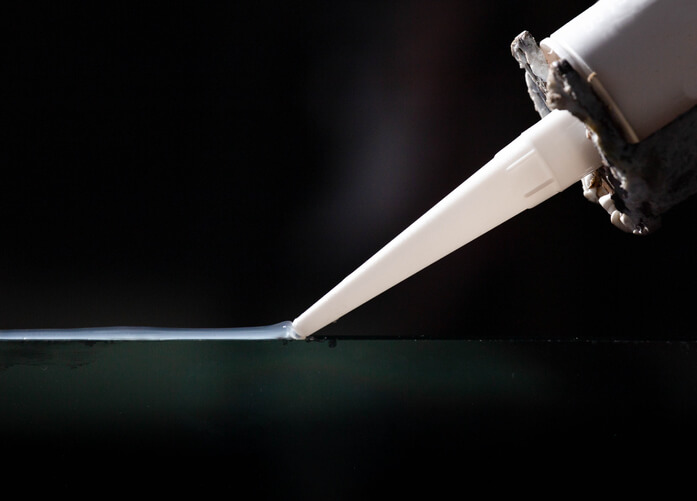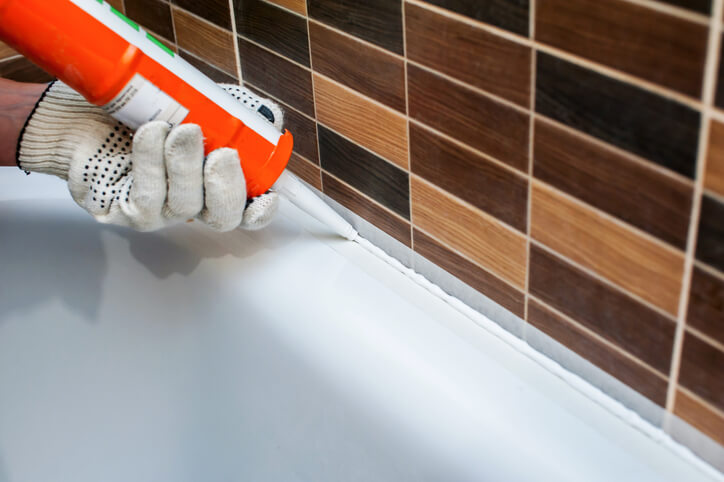Knowing how long it takes for silicone to dry is important to ensure a good finish. Although it is an easy product to use, if it is not used properly it may not fulfill its purpose as an adhesive or sealant.
This compound is one of the most commonly used in home renovations and maintenance, since silicone eventually deteriorates and needs to be replaced.
In this article, in addition to clarifying the drying time of silicone, we will explain what to do to make it dry faster and what factors influence its drying time.
Is dry silicone the same as cured silicone?
First of all, we have to clarify this point, since it is common not to know the difference between drying and curing.
Drying refers to the initial process in which the silicone loses moisture by evaporation of water. This process is generally quite fast (a couple of hours) and leaves the silicone dry to the touch.
Curing is a longer process in which chemical changes take place to give the silicone its final shape and properties (such as waterproofing). This process usually takes about 24 hours, during which time the silicone should not be exposed to normal use conditions (water, humidity, etc.).
Therefore, when you ask yourself how long it takes for the silicone to dry, what you really need to know is the curing time, because after that time you will be able to use it normally.
How long does it take for the silicone to dry?
Most silicones need about 24 hours to dry completely (cure), although this may vary depending on the type of product used.
This weather is the usual one under normal conditions: with a temperature that can be between 5 and 40 degrees and that the place has a free circulation of air.
When the silicone is fully cured, i.e. after 24 hours, it has all its properties and can be safely exposed to water and humidity.
In any case, it is always advisable to read the indications of each manufacturer in order to ensure watertightness after the application of the silicone.
Types of silicone and drying time for each one.

As we said, not all silicones are the same. Depending on their formulation or characteristics, they may have different drying times.
Among the different types of silicone we find:
- Neutral silicone (drying time 24h – 48h)
- Acid silicone (drying time 12h – 24h)
- Silicone for bathrooms and kitchens (dries in 24h)
- Silicone for glass and glazing (drying time 24h – 48h)
- High-temperature silicone (drying time 24h – 72h)
- Structural silicone (curing between 48h – 72h)
For example, some high-temperature silicones need a longer drying time, while others with a fast drying time can be cured in a few hours.
In any case, we repeat the main recommendation in this regard: follow the instructions of each manufacturer, and if in doubt, ensure a minimum of 24 hours drying time. This is the time that neutral silicone (the most common) needs to cure.
Factors influencing the drying time of silicone.
There are a few factors that can change how long it takes for the silicone to dry. It is important to keep this in mind when using this product:
- Humidity: humid air shortens the drying time of silicone. Yes, it seems counter-intuitive, but it is. This means that in very dry climates you may need more time to cure the silicone.
- Temperature: higher temperature accelerates the drying process of the silicone.
- Thickness: the thickness of the applied layer also has an influence, as the silicone dries gradually at a rate of about 2 mm every 24 hours or so.
- Type of silicone: as mentioned above, there are different compounds that can have different drying times.
- Silicone expiration: if the product has exceeded its expiration date it may not cure properly or within the expected time.
What to do to make silicone dry faster?

The ideal is to respect the time indicated by the manufacturer, but there may be cases in which it is necessary to accelerate this process. Here are some tricks that can help you to reduce the drying time of the silicone.
The easiest way is to increase the temperature. As we said before, a higher temperature accelerates the drying process, so if you can increase the temperature up to 40 degrees (approximately) you will be able to reduce the drying time.
Another option is to use a catalyst product sold in hardware stores that is designed specifically for this purpose. You can apply it on top of the putty to accelerate the drying speed of the silicone.
Also, keep in mind these basic tips during application so that the natural drying process is as fast as possible: apply just the silicone you need so as not to over-thicken the bead, make sure you have doors and windows open for good ventilation, and you can even use a fan and a lamp placed nearby to improve ventilation and increase the temperature.
Avoids errors due to a bad drying of the silicone.
As we have recommended, now that you know how long it takes for silicone to dry and how you can speed up the process, remember that it is best to follow the manufacturer’s instructions whenever possible.
Ideally, silicone should be allowed to dry and cure for at least 24 hours before exposure to service conditions to ensure complete insulation and waterproofing.
If you need the silicone to dry in less time, it is best to opt for a quick-drying silicone, so that in just a few hours (between 3 and 12 depending on the product) you can make normal use of the space, such as being able to use the shower without risk. Silicone is a very useful material. Knowing how long it takes to dry will allow you to get the best results when using it in your renovations and repairs.
How long does it take for the silicone to dry?
Superficial curing: Between 30 minutes and 2 hours.
Complete curing: Between 24 and 48 hours (up to 7 days in some cases).
How can I speed up the drying of the silicone?
Increase the ambient temperature (do not exceed 30°C).
Improve ventilation to allow moisture to evaporate faster.
Use a catalyst (some silicones allow the addition of a product to accelerate curing).
Apply thin coats instead of a thick one, since drying will be more uniform.
When can I wet the silicone after application?
It is advisable to wait 24 hours before exposing it to water.
How do I know if the silicone is already dry?
It should be dry to the touch, does not deform when gently pressed and the odor has disappeared.
Can the silicone be painted over?
It will depend on the type of silicone, if it is a paintable silicone, yes, if it is a standard silicone no.


